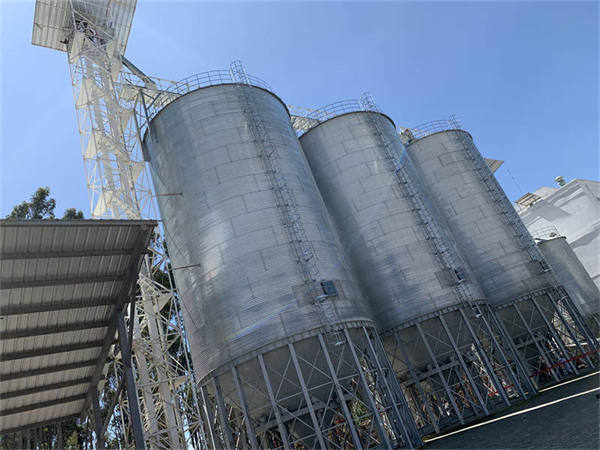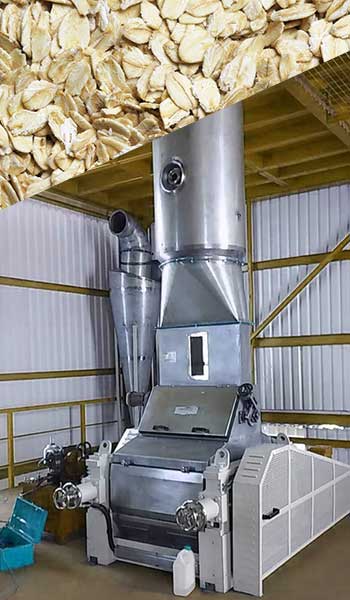Do you know how the oatmeal we eat daily is processed?
SynopsisThe processing technology of traditional naked oats in my country is complicated and the operation technology is difficult.
Description
The processing technology of traditional naked oats in my country is complicated and the operation technology is difficult. Hulled oats are difficult to process using traditional methods and are mostly used as livestock feed. In addition, oatmeal pasta has high energy content and is hunger-resistant, but eating in large amounts can cause indigestion. These two aspects have limited the expansion of the scope of oat consumption to a considerable extent, and it has remained in the position of a minor cereal for a long time.
Oat processing flow and operation methods
The development of modern processing technology provides technical support for oats to enter the staple food series. The development of modern oat processing technology has completely changed and is changing the above situation.
First, modern processing technology is used to process naked oats and hulled oats into oatmeal, and add it to rice at a ratio of 30% to up to 60% to make rice with a pleasant color and very delicious taste;
Second, oatmeal is processed into oatmeal flour, which can be added to wheat flour at a ratio of 30% to 60% for making various pastas (bread, steamed buns, noodles, and even instant noodles).
The new mixed rice and pasta contain oat products in a limited amount, and there is no risk of indigestion when eaten, providing a reliable channel for oat products to enter thousands of households and spread all over the country.
So far, we have produced whole flour, refined flour, high-fiber bran, oat rice, oatmeal, oat instant noodles, oat milk powder, oat ice cream food, and oat glucan, starch, protein, oat oil and other health functional products.
Oatmeal process
Naked oats → Cleaning → Rolling → Washing → Drying → Enzyme-inactivating heat treatment → Cutting → Steaming → Tablet → Drying → Cooling → Packaging → Finished product
How to operate?
1. Cleaning: The cleaning process of oats is similar to that of wheat. Generally, clean oats can be obtained after multiple cleanings based on the difference in particle size and specific gravity. Commonly used equipment include primary cleaning machines, vibrating screens, peeling machines, iron removers, rotary screens, specific gravity screens, etc.

2. Whitening by grinding: From a health perspective, oat bran is the essence of oats, because a large amount of soluble fiber and fat are in the bran layer. Therefore, the purpose of grinding is to whiten and remove dust. To peel oatmeal, you only need to gently rub it to remove the hair and skin. Do not remove too much skin like rice.

3. Wash and dry: After peeling, wash it thoroughly, then centrifuge and spin dry.
4. Enzyme-killing heat treatment: Oats contain a variety of enzymes, especially lipoxygenase. If enzyme-killing treatment is not carried out, the fat in the oats will be oxidized during processing, affecting the yield, quality and shelf life. Heating treatment can kill enzymes, gelatinize oat starch and increase baking aroma. Generally, infrared or far-infrared heating equipment can be used. The heated oats must be processed in the next process or forced to cool in time. Prevent the oil in oats from overheating and oxidizing.

5. Cutting: Oatmeal can be either whole or cut. Pelleting is to cut the oats into 1/2~1/3 size particles through a drum pelletizer. The oatmeal shape after pelletizing and flaking is uniform and easy to crush into thin flakes instead of powder.

6. Steaming: Its purpose is threefold: first, to further deenzyme and sterilize the oats; second, to fully gelatinize the starch to meet the requirements of instant eating or quick cooking; third, to soften the oats and make them easier to tablet. It is best to use a reversible cooking machine for cooking equipment.
7. Flaking: The steamed and moistened oats are pressed into thin flakes through a double-roller flaking machine. The thickness of the flakes is controlled at about 0.5 mm. If it is thick, it will take a long time to cook, and if it is too thin, the product will be fragile. It is better to have a larger diameter of the tablet press roller, usually 200 mm.

8. Drying and cooling: The oats after flaking need to be dried to reduce the moisture to less than 10% to facilitate storage. Oatmeal is thin and has a large contact area. When drying, the purpose of drying can be achieved by heating the air slightly or even just blowing cold air. The best drying equipment is a fluidized bed dryer. After drying, cool to room temperature.
9. Packaging: Generally, materials with good air tightness are used, such as aluminized film, polypropylene bags, and polyester bags. In addition, oatmeal is a kind of instant food with high hygiene requirements. In the later stages of cooking, aseptic production within the system must be achieved as much as possible.











Leave a reply